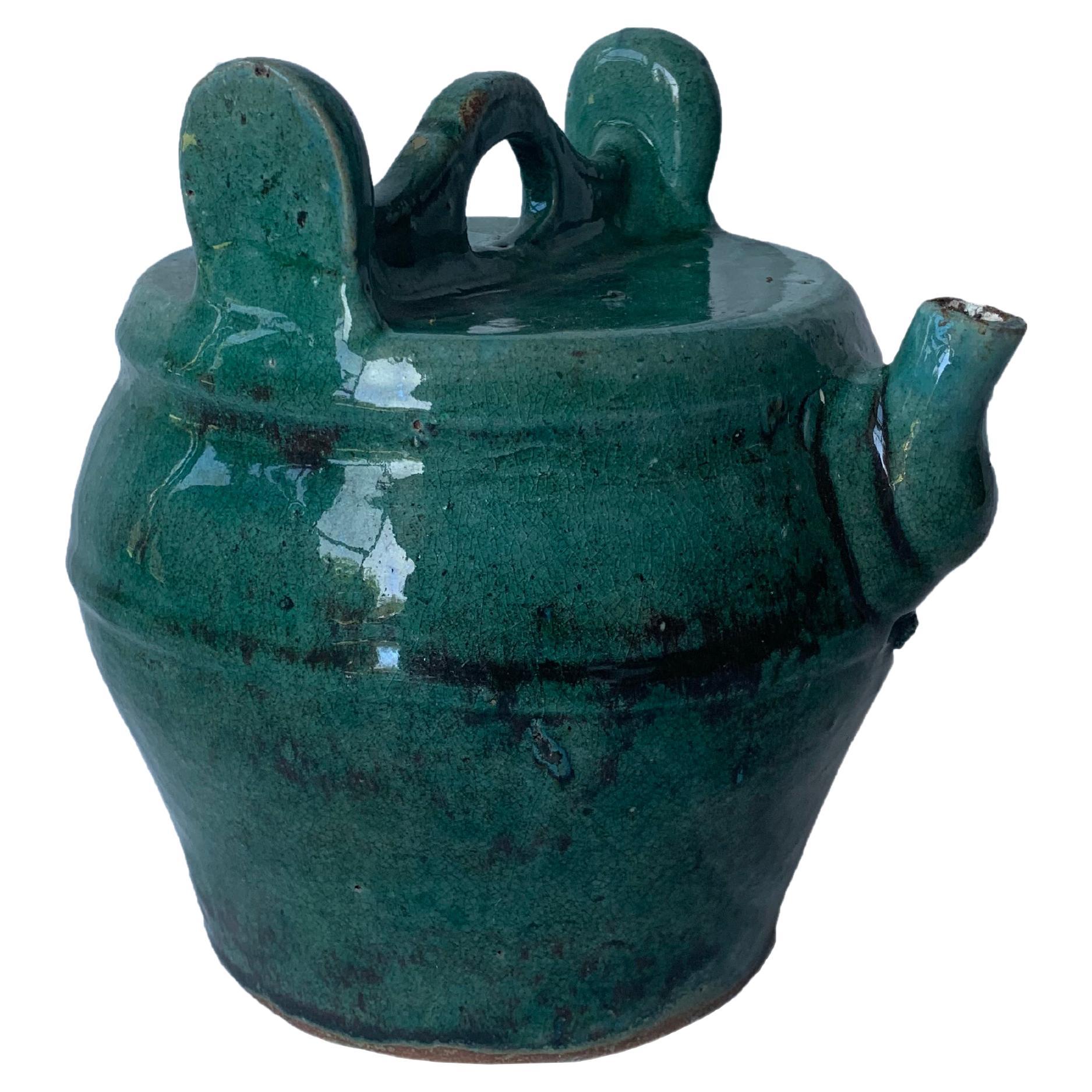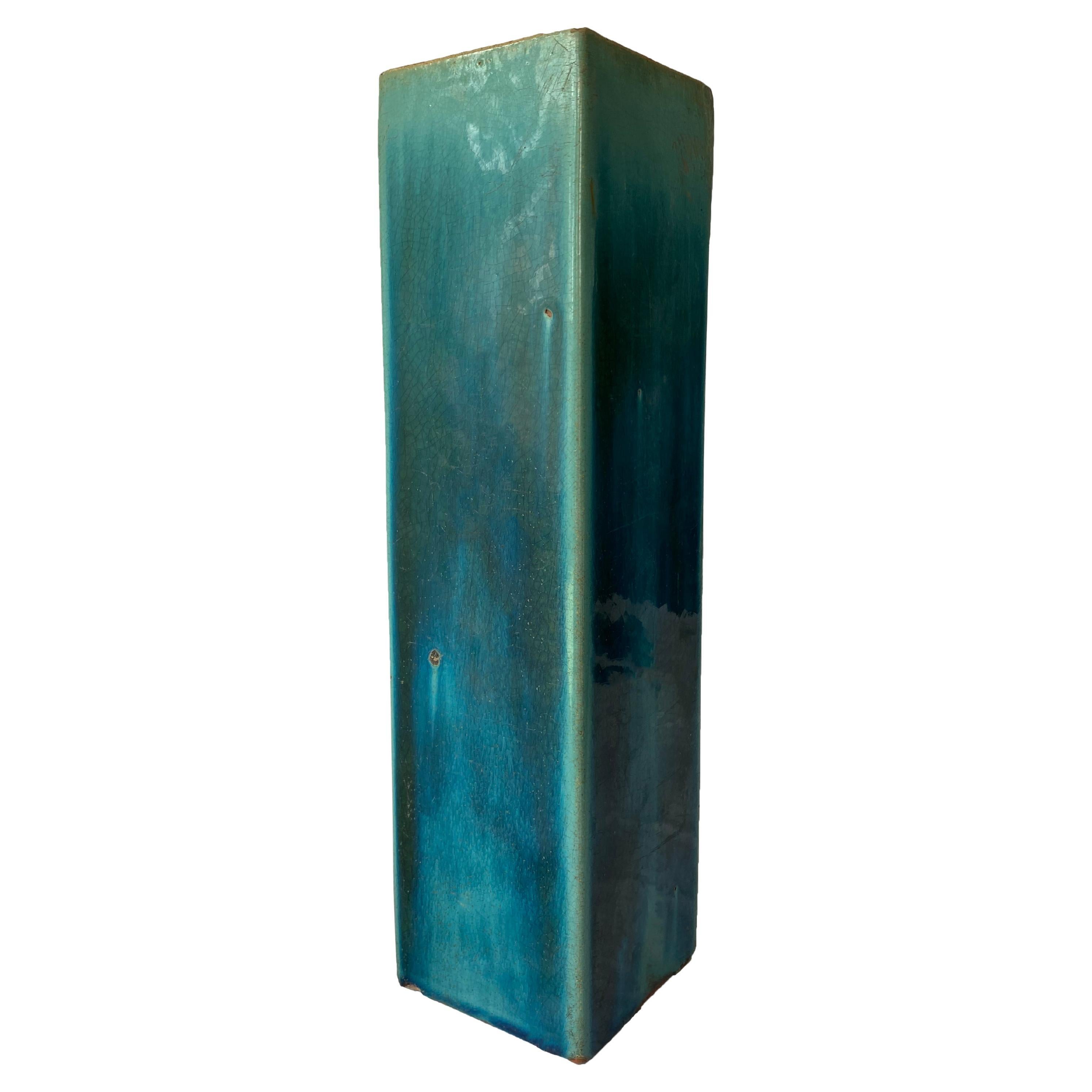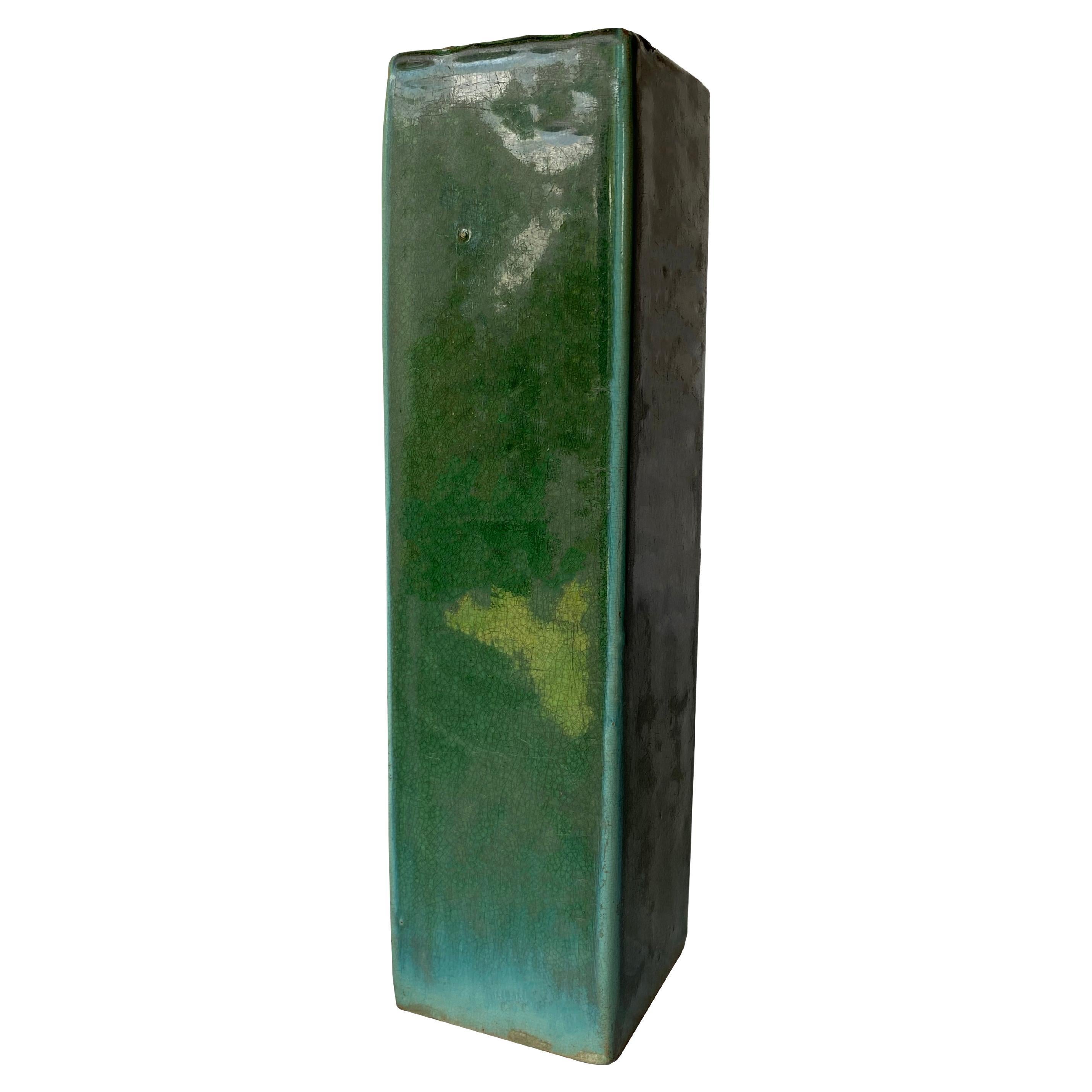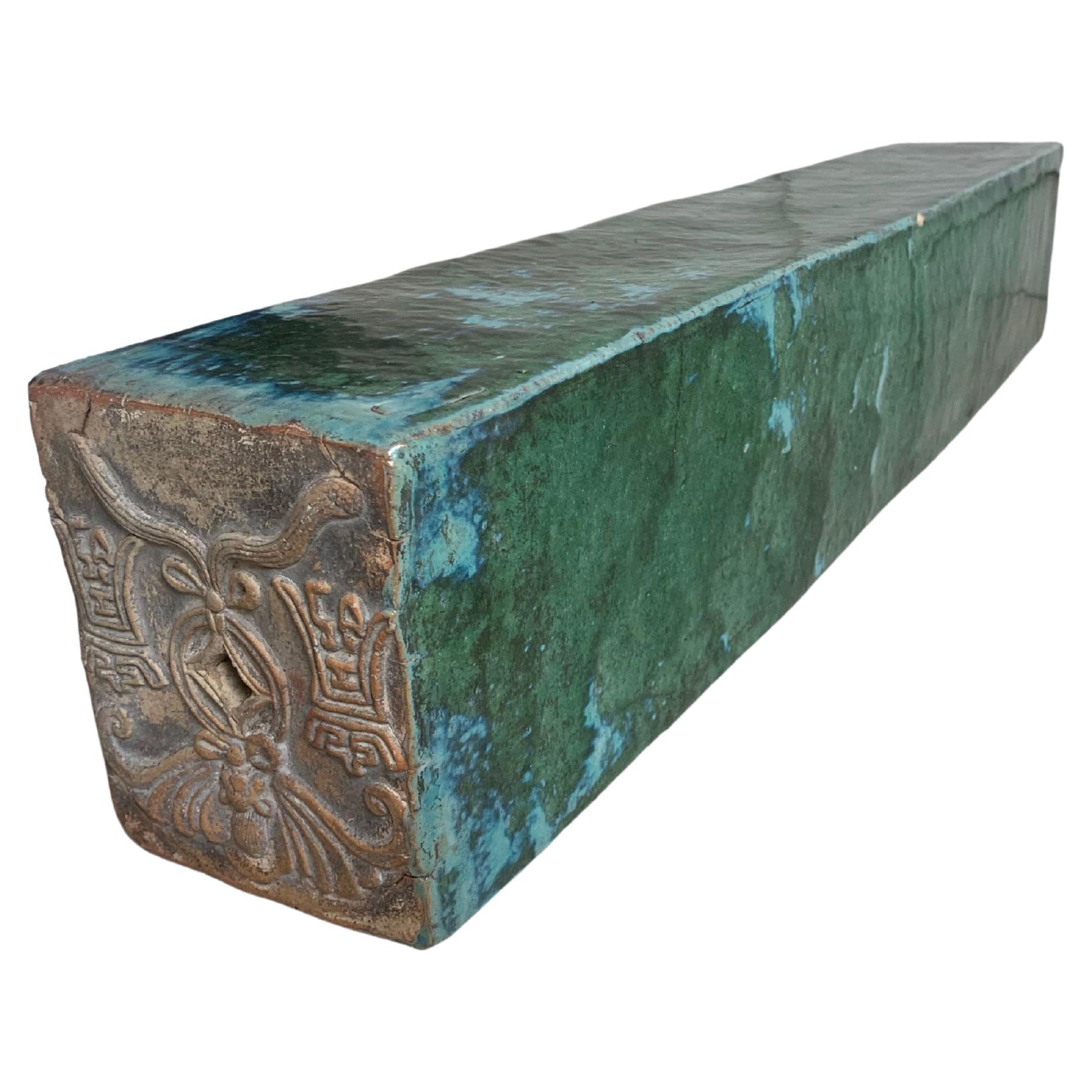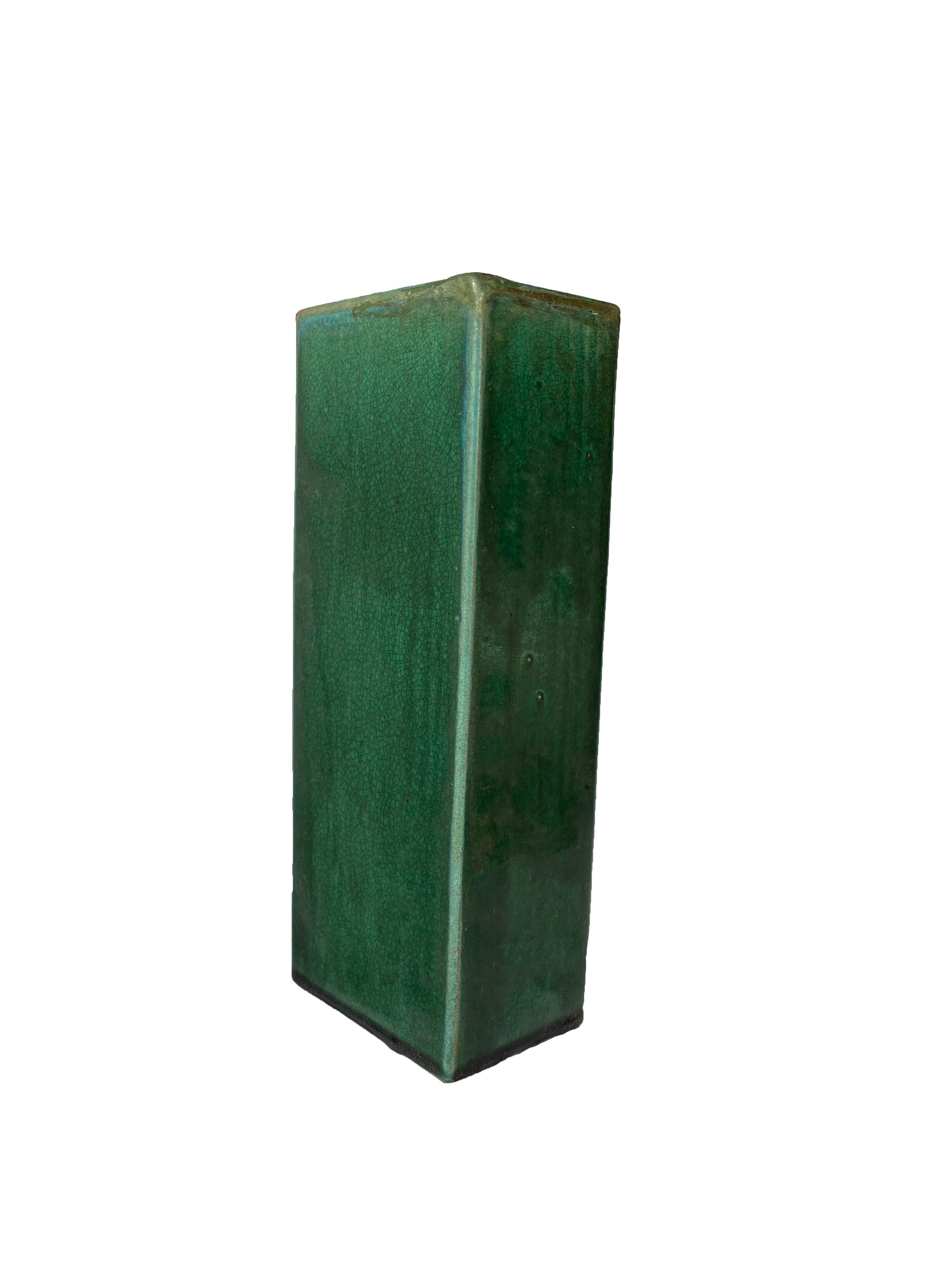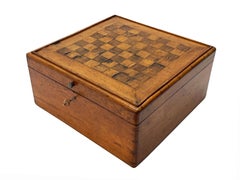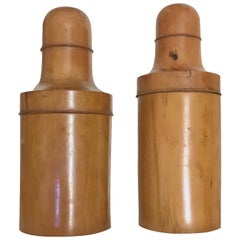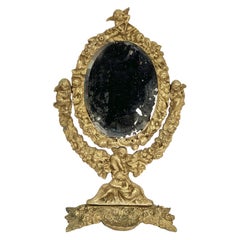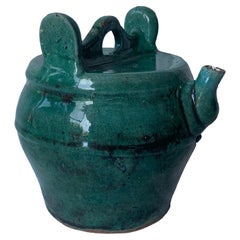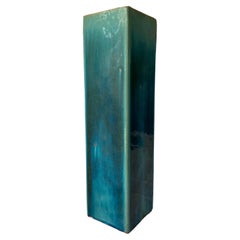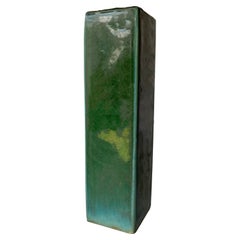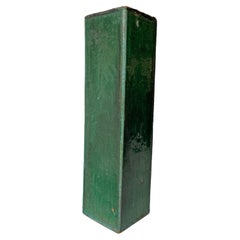Items Similar to Antique Large Green Lion Foo Dog, Glazed Chinese Ceramic, Early 20th
Want more images or videos?
Request additional images or videos from the seller
1 of 16
Antique Large Green Lion Foo Dog, Glazed Chinese Ceramic, Early 20th
About the Item
Marvelous antique foo lion dog sculpture in green glazed ceramic. This outstanding object was hand-made in the early 1900s.
This fine quality ceramic sculpture has outstanding details such as the sinuous whiskers or the collar that give a sense of motion to the dog. The green glazed ceramic with shades of dark green and black is incredibly elegant.
In fabulous condition, with no chips or cracks. This sculpture was hand-made with perfect proportions. The
This lion dog sculpture is a masterpiece and a must have for Asian art collectors. It wwill fit perfectly in a mid-century modern space.
Dimension (cm):
Width - 35
Height - 55
Depth - 19
- Dimensions:Height: 21.66 in (55 cm)Width: 13.78 in (35 cm)Depth: 7.49 in (19 cm)
- Style:Chinoiserie (Of the Period)
- Materials and Techniques:
- Place of Origin:
- Period:
- Date of Manufacture:1910s
- Condition:
- Seller Location:Roma, IT
- Reference Number:1stDibs: LU3067342379072
About the Seller
5.0
Platinum Seller
Premium sellers with a 4.7+ rating and 24-hour response times
Established in 1990
1stDibs seller since 2017
1,602 sales on 1stDibs
Typical response time: <1 hour
- ShippingRetrieving quote...Shipping from: Roma, Italy
- Return Policy
Authenticity Guarantee
In the unlikely event there’s an issue with an item’s authenticity, contact us within 1 year for a full refund. DetailsMoney-Back Guarantee
If your item is not as described, is damaged in transit, or does not arrive, contact us within 7 days for a full refund. Details24-Hour Cancellation
You have a 24-hour grace period in which to reconsider your purchase, with no questions asked.Vetted Professional Sellers
Our world-class sellers must adhere to strict standards for service and quality, maintaining the integrity of our listings.Price-Match Guarantee
If you find that a seller listed the same item for a lower price elsewhere, we’ll match it.Trusted Global Delivery
Our best-in-class carrier network provides specialized shipping options worldwide, including custom delivery.More From This Seller
View AllEarly 20th Century Large Wooden Inlaid Squared Italian Chessboard Box, 1900s
Located in Roma, IT
Exquisite large wooden inlaid squared chessboard box. This fantastic item was designed in Italy during the beginning of the 20th century.
This handmade box is fantastic because it has an amazing chessboard made of a combination of pine and oak wood squared pieces. The inside part is very large and can be closed with a key that is included.
A wonderful piece that is perfect for completing a neoclassic living room...
Category
Early 20th Century Italian Other Game Boards
Materials
Oak, Pine, Wood
Pair of Early 20th Century Boxwood Italian Pharmacy Bottles
Located in Roma, IT
A pair of early 20th century boxwood containers (21 cm) that allowed the discreet storage of medicines destined to treatments of pathologies to be kept hidden.
A unique set that w...
Category
Antique Early 1900s Italian Decorative Boxes
Materials
Boxwood
Early 20th Century Neoreinnasance Gilded Bronze Table Mirror and Sculpture
Located in Roma, IT
Amazing Italian Mercury gilded table mirror produced during the 20th century in Italy.
This unique piece is a an art masterpiece with two main elements:
- a wonderful two pieces adjustable mirror;
- a lost-wax casting bronze sculpture representing the Deposition of Christ...
Category
Early 20th Century Italian Neoclassical Revival Table Mirrors
Materials
Metal, Bronze
Early 20th Century K. Petermann Leather Horse Collar Swiss Wall Mirror, 1917
Located in Roma, IT
Original decorative collar in leather from 1917, converted into wall mirror.
The producer of the leather collar is K. Petermann, and this unique frame was produced in Dietlikon, Switzerland. The collar has the production number "No. 60 WEIT, LARGE" and a seal, consisting of a Swiss cross...
Category
20th Century Swiss Other Wall Mirrors
Materials
Brass
Luigi Fontana Early 20th Century Italian Oval Mirror, 1927
By Luigi Fontana
Located in Roma, IT
Amazing early 20th century oval mirror with external mirror frame. This piece is signed by Luigi Fontana, dated October 14, 1927 and designed in Palermo, Italy.
This piece has some signs and chipping but it is definitively a museum piece as it was designed by Luigi Fontana, founder of Fontana Arte, before the foundation of this company.
Thanks to its sculped frame, this piece will smarten a living room or a bedroom.
Fontana Arte (established in 1933) was founded by Luigi Fontana, Gio Ponti, and Pietro Chiesa as a premier producer and marketer of furniture, lighting, and furnishing accessories, and distinguished itself applying the highest standards of glass craftsmanship and techniques. Throughout Fontana Arte’s history, its lamps and furniture have been highly sought after due to their superior glass craftsmanship and innovative design.
Saint-Gobain Invests in Luigi Fontanta e Compagni
The origins of Fontana Arte go back to 1881 when Luigi Fontana established Luigi Fontana e Compagni to produce and market sheet glass for the construction industry. Luigi’s success as an entrepreneur in the growing Italian construction sector attracted the attention of the French glass-making company Saint-Gobain, which, in 1910, took a majority stake in the ownership of Luigi Fontana e Compagni transforming it into a “Società Anonima” still under the direction of Luigi Fontana. By the mid-1920s, Fontana e Compagni’s capabilities included the creation of artistic stained glass that was mostly used in functional and decorative settings of churches and cathedrals.
Gio Ponti Becomes Fontana e Compagni’s Artistic Director
In just a few years, the production of such artistic stained-glass products had become of such importance that a different division within the Fontana e Compagni was created to further its development. In 1930, Luigi Fontana met the successful young Milanese architect Gio Ponti, who was then the art director of Richard-Ginori pottery company, and they formed a partnership, under the name of Luigi Fontana SA, for the production of light fixtures, furniture, and furnishing objects. During this initial period, Gio Ponti designed from Fontana Arte the now-iconic 0024 Pendant light (1931) and the Bilia Table Lamp (1931).
Pietro Chiesa, Gio Ponti, and Luigi Fontana Found Fontana Arte
In 1932, Gio Ponti approached Pietro Chiesa to join him and Luigi Fontana and to become Luigi Fontana SA’s artistic director. In 1933, Pietro Chiesa merged his studio, the Bottega di Pietro Chiesa, with Fontana SA, and together Luigi Fontana, Gio Ponti, and Chiesa founded Fontana Arte. During Chiesa’s tenure as artistic director, Fontana Arte’s production became rich and varied. It included furniture, tables, mirrors, sculptures, and stained glass, but it was certainly in the lighting sector where Fontana Arte excelled by creating lamps and lights with the highest standards in glass craftsmanship and modern designs. From this period came the Luminator floor lamp, the Cartoccio glass vase, and the Fontana Arte table made out of a single band of bent clear glass, (all designed by Pietro Chiesa, in 1932); and the Naska lamp...
Category
Vintage 1920s Italian Other Wall Mirrors
Materials
Mirror
Early 20th Century Louis XV Style 800 Silver Italian Table Mirror, 1930s
Located in Roma, IT
Early 20th century 800 Silver table or wall mirror. This fantastic item was designed in Italy during the 1930s following Louis XV's style.
The original silver patina is extraordi...
Category
Early 20th Century Italian Louis XV Table Mirrors
Materials
Silver
You May Also Like
Chinese Ceramic Green Glazed 'Shiwan' Teapot, Early 20th Century
Located in Jimbaran, Bali
Early 20th century Shiwan green-glazed teapot from China's Shiwanzhen district near Guangdong.
Category
Early 20th Century Chinese Other Ceramics
Materials
Ceramic
Chinese ceramic Green Glazed 'Shiwan' Opium Pillow, Early 20th Century
Located in Jimbaran, Bali
This Shiwan ceramic pillow of earthenware features a green/blue glaze, which is less common than the distinctive green-glaze of Shiwan ware. Pillows in this shape were not only used by opium smoke...
Category
Early 20th Century Chinese Other Ceramics
Materials
Ceramic
Chinese ceramic Green Glazed 'Shiwan' Opium Pillow, Early 20th Century
Located in Jimbaran, Bali
This Shiwan ceramic pillow of earthenware features a green glaze with hints of blue. Pillows in this shape were not only used by opium smokers but most typ...
Category
Early 20th Century Chinese Other Ceramics
Materials
Ceramic
Chinese Ceramic Green Glazed 'Shiwan' Opium Pillow, Early 20th Century
Located in Jimbaran, Bali
This Shiwan ceramic pillow of earthenware features a green glaze with hints of blue. Pillows in this shape were not only used by opium smokers but most typ...
Category
Early 20th Century Chinese Other Ceramics
Materials
Ceramic
Chinese Ceramic Green Glazed 'Shiwan' Opium Pillow, Early 20th Century
Located in Jimbaran, Bali
This Shiwan ceramic pillow (headrest) of earthenware features a green & blue glaze. Pillows in this shape were not only used by opium smokers but most typi...
Category
Early 20th Century Chinese Other Ceramics
Materials
Ceramic
$436 Sale Price
20% Off
Chinese ceramic Green Glazed 'Shiwan' Opium Pillow, Early 20th Century
Located in Jimbaran, Bali
This Shiwan ceramic pillow of earthenware features a green glaze. Pillows in this shape were not only used by opium smokers but most typically were used fo...
Category
Early 20th Century Chinese Other Ceramics
Materials
Ceramic
